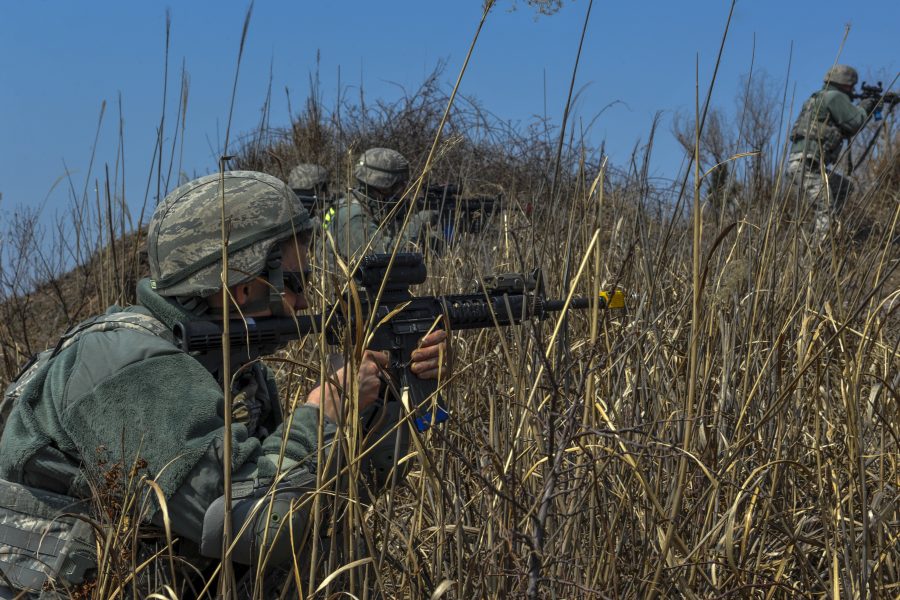The 8th Fighter Wing is repurposing elements of the “agile combat employment” concept to better defend Kunsan Air Base in South Korea, Wing Commander Col. Chris B. Hammond told Air Force Magazine on Oct. 7.
Hammond said the wing’s new approach to base security, dubbed “Weapon System Kunsan,” looks to use all on-base manpower and assets more holistically. It also wants to revamp its partnership with South Korean troops who handle security outside of the binational base’s gates.
Agile combat employment is the Air Force’s strategy for quickly deploying across the world without needing to rely on the permanent resources offered at brick-and-mortar installations, which may be attacked in a conflict. ACE advocates for training Airmen to handle a range of tasks instead of a single specialty, and the 8th Fighter Wing wants to use that concept to creatively strengthen base defense.
Hammond said the wing is working to better integrate the base’s entire population, as well as the Republic of Korea Army that defends the installation. The U.S. military hopes that approach will improve Kunsan’s protection, how it welcomes new units, and how it launches into combat.
“Because we are a fight-in-place, and not a expeditionary-type mission, we’re looking at that ACE concept … and although we may not bounce around amongst different bases, we are stealing a lot of skill sets and applying them to what we do here and how we fight,” Hammond said. “It may not be a material solution, but an Airman solution where multicapable Airmen have the flexibility to defend the base.”
In addition to the Air Force, Kunsan also houses three U.S. Army units with MQ-1C Gray Eagle strike and reconnaissance drones and a Patriot anti-missile system, and an Army squadron that handles all of Kunsan’s contracting. The Republic of Korea Air Force’s 38th Fighter Group operates KF-16 jets from the base as well.
“To think that we’re going to go fight our adversaries from Kunsan as just the 8th Fighter Wing is not a correct assumption,” Hammond said.
The “Weapons System Kunsan” strategy—one way the wing is responding to Air Force Chief of Staff Gen. Charles Q. Brown Jr.’s directive to maintain air superiority through rapid innovation—demands combining those assets in new ways.
This means integrating the Air Force’s systems with the Patriot battery on base and taking advantage of Kunsan’s organic air power, Hammond said. The installation is looking at using data collected by its aircraft to inform where it may need to fire outside its fence in support of security forces.
“Why would we not use those to not only take the fights to our adversary, but also [to] defend our own base?” he said.
